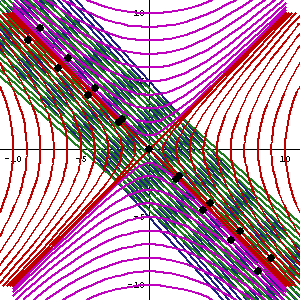You're right. There's no direct experimental way to measure the one-way speed of light without synchronizing separated clocks.If the light beams are reduced to single photons and having mirrors at the ends, you end up with the photons traveling in two directions at once. What I mean is that if the person in the middle of the train fires two photons from his photon gun, one to the front and one to the rear, do the photons reflect from the end walls at different times such that depending on where you are looking at the situation, in one situation the photon is still heading toward the reflector but in another it is already turned around and heading back?
I said something about this yesterday and it is the speed of light that is the physics in question. The speed of light is the same in all frames. So the only way you can measure the speed of light is to send light there and back, a two way speed of light.
So it isn't that the person in the train sees light hit both ends at the same time, but the light returning to him comes back at the same time. A two path. There is no way he can determine if the photons hit the end walls at the same time as it says in the article.
The thought experiments are exploring consequences of the assumption the light propagates at the same speed in all frames, which is how the train observer draws their conclusion.
You could just as validly say that that the strikes were NOT simultaneous, but were sensed as simultaneous by the person on the platform because he was moving but he does not realize he is moving.In the Einstein case the lightning strikes were simultaneous but not sensed as simultaneous by the person in the train because he was moving but he does NOT realize he is moving, so he assumes the lightning struck the front first.
The whole point of relativity (since Galileo) is that there is no way to choose which is actually not moving.
The platform is moving past the train.
The train is moving past the platform.
There is no way to decide which is absolutely true, so it makes sense to conclude that neither is absolutely true. They are relative statements.
Compare with these easier relative statements:
The platform observer says the platform is here and the train is there.
The train observer says the train is here and the platform is there.
This is the simplest model that is consistent with the experimental findings.
It's true that a Lorentzian model, where there is an absolute but undetectable rest standard, is also consistent with the experimental findings (in flat space, at least), but what's the point of including an unnecessary, undetectable entity?.






